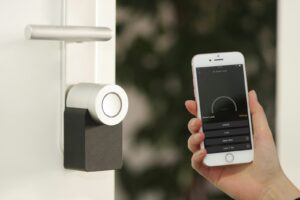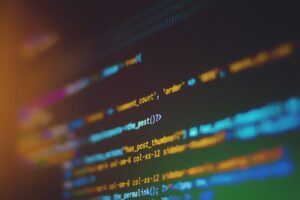Strategies for Secure IoT Integration with Legacy Systems
As businesses in Saudi Arabia, the UAE, and globally pursue digital transformation, ensuring security and integrity of data during IoT integration with legacy systems becomes a critical concern. Integrating modern IoT solutions with existing infrastructure involves significant risks that need strategic mitigation to maintain data integrity and prevent security breaches. Executives and IT managers must adopt comprehensive approaches to navigate these challenges effectively.
One primary strategy is conducting thorough security assessments of both IoT devices and legacy systems before integration. Identifying vulnerabilities in the current infrastructure and potential threats posed by IoT devices can help in formulating targeted security measures. In cities like Riyadh and Dubai, where smart city initiatives are rapidly evolving, ensuring robust security assessments is vital for protecting sensitive data and critical infrastructure from cyber threats.
Another crucial approach involves implementing end-to-end encryption for data transmission between IoT devices and legacy systems. Encryption ensures that data remains secure and unreadable to unauthorized entities during transit. Utilizing advanced encryption protocols can significantly reduce the risk of data breaches. For example, deploying secure communication channels in smart transportation systems in Dubai ensures the confidentiality and integrity of real-time data exchanged between vehicles and traffic management centers.
Implementing Robust Access Controls
Effective access control mechanisms are essential for ensuring security and integrity of data during IoT integration with legacy systems. These mechanisms help prevent unauthorized access to sensitive data and critical systems. Implementing multi-factor authentication (MFA) and role-based access control (RBAC) ensures that only authorized personnel can access and manipulate data.
In the healthcare sector, for instance, hospitals in Riyadh and Dubai are increasingly integrating IoT devices for patient monitoring and data collection. By implementing robust access controls, healthcare providers can safeguard patient data, ensuring that only authorized medical professionals can access and update patient records. This not only protects patient privacy but also enhances data accuracy and integrity.
Additionally, continuous monitoring and auditing of access logs can help detect and respond to unauthorized access attempts promptly. Utilizing advanced analytics and machine learning algorithms can enhance the ability to identify unusual access patterns, enabling timely intervention and mitigation of potential security threats. This proactive approach is crucial for maintaining the security and integrity of data in IoT-integrated environments.
Ensuring Data Integrity Through Reliable Middleware Solutions
Middleware solutions play a pivotal role in ensuring security and integrity of data during IoT integration with legacy systems. Middleware acts as an intermediary that facilitates communication and data exchange between IoT devices and legacy systems. Selecting reliable and secure middleware solutions is essential for maintaining data integrity and ensuring seamless integration.
In sectors like finance and manufacturing in the UAE, middleware solutions enable real-time data processing and analytics, enhancing operational efficiency and decision-making. However, the reliability of these solutions is paramount. Implementing middleware with built-in security features such as data validation, error detection, and redundancy ensures that data remains accurate and intact during transmission and processing.
Furthermore, employing middleware solutions that support standardized communication protocols can enhance compatibility and interoperability between IoT devices and legacy systems. This is particularly important in complex environments where diverse devices and systems must work together seamlessly. For instance, in Riyadh’s energy management projects, standardized middleware ensures that data from various sensors and devices is accurately collected, processed, and transmitted to central management systems without loss or corruption.
Maintaining Security and Integrity Post-Integration
Continuous Monitoring and Maintenance
Ensuring security and integrity of data during IoT integration with legacy systems does not end with successful integration. Continuous monitoring and maintenance are crucial for sustaining the security posture and operational efficiency of the integrated environment. Regular security audits, vulnerability assessments, and system updates are necessary to address emerging threats and vulnerabilities.
In the dynamic digital landscapes of Riyadh and Dubai, where technological advancements are rapid, businesses must stay ahead of potential security challenges. Deploying automated monitoring tools that provide real-time insights into system performance and security status can significantly enhance the ability to detect and respond to threats. Automated alerts and incident response protocols ensure that any security breaches are promptly addressed, minimizing the impact on data integrity and system functionality.
Moreover, ongoing training and awareness programs for employees are essential. Ensuring that staff are knowledgeable about security best practices and potential threats can significantly reduce the risk of human error, which is often a major factor in security breaches. Regularly updating training programs to reflect the latest security trends and technologies helps maintain a vigilant and informed workforce.
Enhancing Data Integrity with Blockchain Technology
Integrating blockchain technology can offer a robust solution for ensuring security and integrity of data during IoT integration with legacy systems. Blockchain’s decentralized and immutable nature makes it an ideal technology for securing data transactions and maintaining data integrity. Each transaction recorded on the blockchain is encrypted and linked to the previous transaction, creating a tamper-proof chain of data.
In sectors such as supply chain management in the UAE, blockchain can enhance transparency and traceability. By integrating blockchain with IoT systems, businesses can ensure that data related to product tracking and inventory management is accurate, secure, and verifiable. This reduces the risk of data tampering and enhances trust among stakeholders.
Additionally, smart contracts enabled by blockchain technology can automate and secure data exchange processes. These self-executing contracts with predefined rules ensure that data transactions are carried out accurately and securely, reducing the need for manual intervention and minimizing the risk of errors.
Conclusion
In conclusion, ensuring security and integrity of data during IoT integration with legacy systems is a multifaceted challenge that requires a comprehensive and proactive approach. By conducting thorough security assessments, implementing robust access controls, utilizing reliable middleware solutions, and leveraging technologies like blockchain, businesses can effectively navigate the complexities of IoT integration. Continuous monitoring, regular maintenance, and ongoing training are essential for sustaining security and data integrity in the long term. As cities like Riyadh and Dubai continue to innovate and integrate advanced technologies, adopting these strategies will be crucial for achieving secure and successful digital transformation.
#IoTIntegration #DataSecurity #LegacySystems #BusinessTransformation #SaudiArabia #UAE #Riyadh #Dubai #Cybersecurity #DigitalTransformation #AI #Blockchain #GenerativeAI #ExecutiveCoaching #ModernTechnology #BusinessSuccess #LeadershipSkills #ProjectManagement













